Button Up Your Overcoat – Or How To Keep An Old Song Perpetually Young
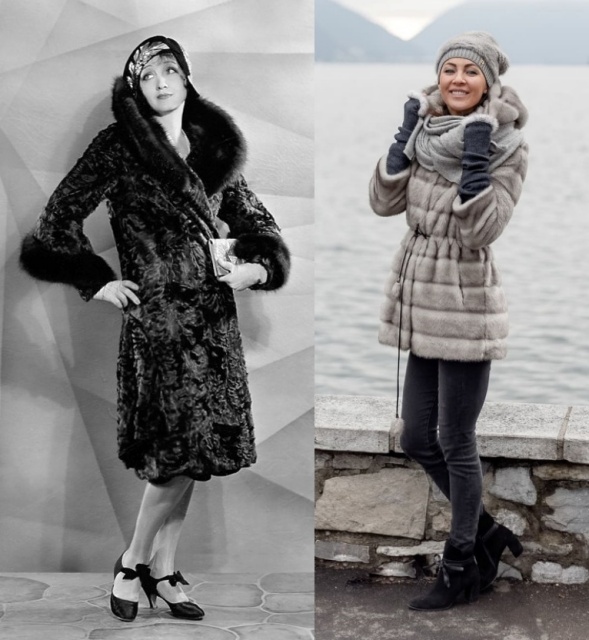
I love classic jazz of all eras – but then you who read here regularly already know this. One of the things I love most about it is that there is a world of new discoveries out there no matter how much or little of it you have sampled. The variety is hard to fathom. For example, have you ever thought about how differently a song can sound during six different decades over a span of almost ninety years? If not, here’s your chance.
I was reminded of this point by fellow blogger Joni at thehomeplaceweb who wrote a piece recently on the winter coats of her past. I expected to give a quick skim to the first few paragraphs, but found myself pulled in by a tale of an evolving life examined through the winter coats that kept it warm over the years. And if that were not enough, she included two YouTube clips (recorded about twenty years apart) of the old musical chestnut “Button Up Your Overcoat”. I found myself captivated and went on a dive. Which I thought I might share.

Button Up Your Overcoat was published in 1928, one in a never-ending sea of pop hits that came out of what was called Tin Pan Alley – the New York location which was the center of the music publishing business from the 1880’s until it began a long, slow disappearing act during the Depression. A more modern analog would be The Brill Building where New York songwriters like Carole King, Neil Sedaka and Neil Diamond churned out a bonanza of hits early in the rock and roll era.
The tune came from Ray Henderson, who is also known for Life Is Just A Bowl Of Cherries and Has Anybody Seen My Gal (which was better known by its opening line, 5 foot 2, eyes of blue). Lyricists B.G. (Buddy) DeSylva and Lew Brown rounded out what was one of the top songwriting teams of the era. There is an apocryphal story out there that George Gershwin’s mother once asked her famously gifted son why he couldn’t write music like theirs.
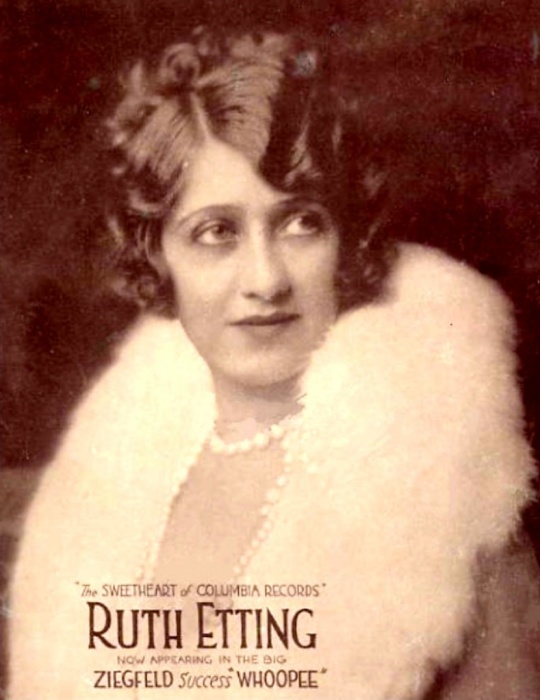
Ruth Etting was the first to perform the song in 1928 and recorded it the following year. The most famous early record was by Helen Kane, whose voice and delivery served as the inspiration for the Betty Boop cartoon shorts of the time. I listened to both and found the Etting version the more listenable record, and not by a little.
Etting was one of the most famous performers of her day, hugely in demand on stage and screen, and with something like sixty hit records to her credit as well. The vocal is not bad as 1920’s vocals go (not a high bar, admittedly) and the small group of instrumentalists back her delightfully. To really appreciate the quality of this record you have to compare it to the Kane version.
Some time in the late 1930’s, Etting got involved in some messy domestic situations of the kind that would not cause anyone to blink today. But there was scandal un-befitting of “America’s Sweetheart of Popular Music” and she lived the rest of her life in presumably happy obscurity.
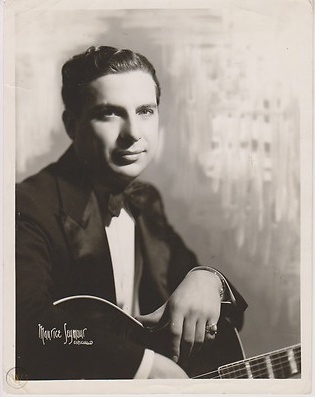
Not to take anything away from Etting, but what really puts the bubbles in this champagne is the guitar of Eddie Lang. My first effort to ID the musicians came up empty, but I was ready to bet $5 that Eddie Lang was on that guitar. Lang was the first genuinely influential jazz guitar player and was highly sought after by the musicians of the late 20’s. He would undoubtedly be better known had he not died during a tonsillectomy in 1933 at the age of 30. Anyway, some deeper digging confirmed that the delightful combination of rhythm strumming and brief single-string solos was indeed Lang (whom we have touched on before). And for what it’s worth, the cornet and clarinet were Tommy and Jimmy Dorsey, who recorded this song in the same studio four days later with another group billed as The Dorsey Brothers Orchestra.*
But back to our song! After an initial burst of popularity the song settled into the ocean of material from which popular singers dipped during their insatiable need for material in the days of live radio. An example I found was this one, a fun bit from a 1945 radio broadcast with a thirty-year-old Frank Sinatra.

It is fun because I get a kick out of listening to Sinatra during his teen-idol years when he was like the Justin Bieber or the Jonas Brothers of the early 40’s. This was perhaps the peak of his physical voice (which was absolutely lovely) though before his style migrated into the more modern sound most associate with the storied singer.
With Sinatra on the show was a group called The Pied Pipers which became famous along with him during the time they spent and performed together with the Tommy Dorsey Orchestra. The group underwent many personnel changes and June Hutton who does the duet with Frank was one of the later members. This bit, by the way, shows off the easy camaraderie Sinatra shared with other singers and musicians, undoubtedly the product of his early training as “boy singer” for the Dorsey outfit.**
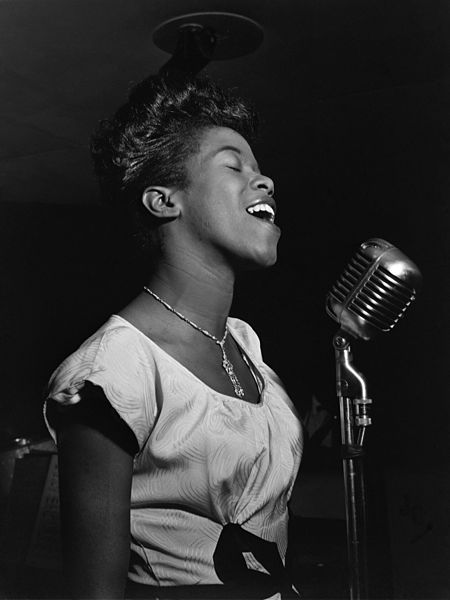
There were quite a few recordings of the song in this era in which it got the usual updates in tempo, rhythm and style. An honorable mention goes to Sarah Vaughan whose 1947 record from very early in her career was Joni’s second featured sample of the song. We have featured Vaughan here before and while this early record lacks much of the polish she brought to her later records, Sassy is like Jell-O in that there is always room for some of her music.
The song continued to have vitality into the 50’s. Rock was coming hard, but there were new styles in jazz that kept the old stuff in work, and one example is this 1955 recording by The Hi-Lo’s. This was a group formed in 1953 and was active into the 60’s. Known for the wide range covered by the four voices, their arrangements featured very modern (for the era) harmonies – as shown by this recording.
I harbor mixed feelings about The Hi-Los – I have always found their arrangements to be as much about theatrics as about music, and have found the similarly voiced Four Freshmen to have aged better. Still, this is a great example of the way arrangers could take the words and structure of an old song and bring it up to date in a way that sounded fresh.
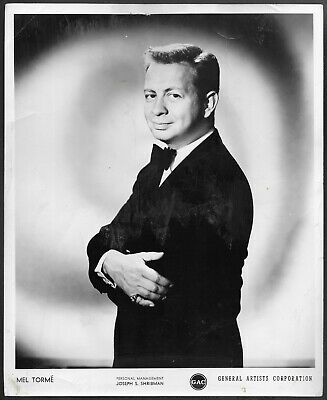
I would like to skip the 1960’s – its just depressing. But I have to do this – Mel Torme’ giving the song a run in 1968. This is a not-so-great example of a way arrangers could take the words and structure of an old song and bring it up to date. This is my very first time to feature a song I can barely stand to listen to. The 1960’s may have been the nadir of “traditional” jazz. The music was going in a lot of directions, and some (even as talented as Mel Torme’) thought that a fusion of classic jazz and sixties rock & roll was the way forward, in a “groovy, baby” kind of way. They were wrong.
Fortunately, Mel (known as The Golden Fog for his smooth voice) hung around long enough that good taste came back into style and he closed out his career with several excellent albums to add to his fabulous earlier stuff. We will have to come back to Mel at some point, but today is not that day. I also found a version by Nancy Sinatra, but I’m going to make you go find that one by yourself.
Things began looking up with a new generation of musicians who took the time to dig through that treasure chest that is The Great American Songbook. These next two artists are new to me, but provided fabulous takes on this old song, and ones that I thought worth sharing.

Let’s start with Nnenna Freelon, who has a most fascinating story. She married and raised children before starting a singing career later in her life, and had become one of a new generation of jazz singers who has kept the party going. Her 2000 album Soul Call contains a unique version of Button Up, one that flows as smoothly and soulfully as a good glass of whisky late in the evening.
Freelon’s version takes the old song, disassembles it, and puts it back together in a completely new way, including some new lyrics towards the end of the track. This would be the musical version of what car guys call a RestoMod – where you start with an old classic and replace virtually everything so that it is really a new car that resembles an old one. In music, this kind of treatment is the essence of jazz, where there should always be room for new interpretations. No longer bouncy and cheery, this take is rich and sensuous and brings the song into a new century. And does it marvelously, I should add.

And a(nother) surprise find is Chelsea Williams, an LA based performer who has not (not yet, at least) really reached the level of acclaim of the earlier performers in their respective eras. However, she is a new talent for another new era, one as comfortable with social media platforms as with traditional club stages. Her story is fascinating as well, a natural talent honed by busking and small gigs that has gained notoriety in the last several years, and for all the right reasons. And maybe she is new to me only because I am not 25 years old any more and don’t venture outside of my own musical sandbox as often as I should.
This recording from 2017 sort of takes the song back to its roots, right down to the simple guitar backing and the re-use of the old introduction (which I love). This one also changes the flavor of the piece by re-working some of the chords, though this time more in the direction of folk instead of soul, adding yet another layer of flavor to this tune as it approaches its one hundredth anniversary. This really is one of the most pleasant new things I have heard in awhile and Chelsea Williams absolutely belongs to this long string of talented people who have continued finding new ways to Button Overcoats for all of these years.
This brings up up to date in our ninety year odyssey from the era where the electric microphone was the latest in recording technology all the way to today, when are not quite sure what the latest technology even is.
I’ve given you a lot to digest here, and my hope is that you might try these at your leisure and appreciate the versatility of an old jazz standard and the evolution of the vocal styles that have kept it ever young. To bring us back to our point of beginning, every single one of the recordings mentioned here today is one I had never, ever heard before Joni brought the first two to my attention. I have, however, listened and enjoyed each multiple times since then (except for that one by Mel Torme’) and plan to continue doing so. If you find yourself humming along to one of these the next time you bundle up to go outside on a cold day, I will have done my job.
* Two sources give slightly differing accounts of the musicians. In one, they are listed as Tom Dorsey (cnt), Charlie Butterfield (tb), Jimmy Dorsey (ct), Joe Venuti (vn), Frank Signorelli (p), Eddie Lang (g) and Joe Tarto (or Ward Lay) (sb). [Jimmy Dorsey, A Study In Contrasts by Robert Lee Stockdale (1999, Scarecrow Press)] A second [Jazz and Ragtime Records 1897-1942, Brian Rust, Malcolm Shaw] is the same, but without violinist Joe Venuti – a friend of Lang dating back to their Philadelphia childhoods. This one makes more sense as I could not detect Venuti’s jazz violin anywhere in the record.
And just so you know that I did my due diligence, I listened to the Dorsey Brothers version. It has some appeal for those into music of the era, but is pretty conventional and is not nearly as good as the Ruth Etting version.
** For the record, the Tommy Dorsey Sinatra jokingly claimed to have spent twelve years with was the same Tommy Dorsey who played on that 1929 Ruth Etting record. Dorsey was the bandleader who hired Sinatra and made him a household name during their time together, which was actually 1940-42. Dorsey was also the guy who was believed to have been the inspiration for the scene in the 1973 movie The Godfather where Michael Corleone told a story about how a member of the crime family held a gun to the head of a bandleader and made him “an offer he couldn’t refuse” in order to let a star singer out from under his contract.
Axle Stordahl, who led the band in this recording, had been an arranger for Dorsey during that period when Sinatra recorded 80 records with the band. Stordahl had been one of the first to write arrangements where the singer was the feature and the band was the background. Stordahl would be Sinatra’s music director during Sinatra’s early solo career.
Music Credits
Ruth Etting – From the YouTube page of The 78Prof
Frank Sinatra – From the YouTube page of Sinatra 50
The Hi-Lo’s – From the Hi-Lo’s – Topic YouTube page
Mel Torme’ – From the YouTube page of djJoanValdes
Nnenna Freelon – From the Nnenna Freelon – Topic YouTube page
Chelsea Williams – From Chelsea Williams’ YouTube page, with permission from the performer and Blue Elan Records
Photo Credits
Opening Photo – pairing of a September, 1929 photo of Hedda Hopper from the George Grantham Bain collection of the Library of Congress (no known copyright) and an undated photo in the public domain as found at Piqsels.com
Button Up Your Overcoat Sheet Music published in connection with the 1930 musical Follow Through. Offered for sale at Amazon.
Ruth Etting – From the cover of a piece of sheet music from another of her 1929 hits, found online via The Nebraska Historical Society
Eddie Lang – c. 1929 promotional photograph without copyright markings, previously offered for sale on Worthpoint.com
Frank Sinatra – c. 1943 promotional photograph without copyright markings as published by Billboard Magazine.
Sarah Vaughan – August, 1946 in New York by William Gottlieb. Photograph is in the public domain and found at Wikimedia Commons.
Mel Torme’ – 1960’s promotional photograph without copyright markings as offered for sale at pickclick.com.
Nnnenna Freelon – 1998 photograph by John Matthew Smith posted at Wikimedia Commons under a Creative Commons Attribution Share Alike 2.0 license.
Chelsea Williams – 2013 photograph by David P. Discher at his Flickr page, under an Attribution-NonCommercial-NoDerivs 2.0 Generic license.

Well, I tried, I even listened to about 15 seconds of Helen Kane (which was quite enough) but I am impressed that what I would regard as a poor and unpleasant song can be recycled so much.
Chelsea Williams gets the nod from me, nice clean vocals and guitar playing. Good golly, someone who doesn’t totally over sing in 2017.
LikeLike
Agreed – that Helen Kane record has little to recommend it other than as a historical artifact. But then as now, gimmicks sell. I keep coming back to the unusually subtle guitar backup on the Ruth Etting disc.
And I also agree about Chelsea Williams. I have listened to quite a bit of her other stuff over the last week or so and am a fan. Her style is hard to pin down, but that’s OK. I will confess that the ones I have come back to multiple times were the Etting record and then the last two.
LikeLike
This is just delightful. Also: I’m not terribly familiar with Sinatra’s work before the 1950s and it is strange to me to hear him sing as he did on that recording.
LikeLike
Why thank you. Yes, early Sinatra was really different from post, say, 1953 Sinatra. This was not a very good showcase for his early stuff, but I’ll tell you that voice mated to a ballad was something amazing.
LikeLike
Thanks for the shout-out JP! So much musical history with just one song – I will comment more tonight….Joni
LikeLike
I will look forward to it. Feel free to take a bow for providing inspiration. I never know where the inspiration for the next post will come from, and your tossing a couple of old recordings into your great story proved to be it.
LikeLike
I replied to this, but see comment.
LikeLike
Where to start with so many versions to analyze. That Helen Kane version was very painful, but I definitely could hear the Betty Boop influence. Mel Torme was bad too, too many horns? in the background. The High-Lows were not good either – reminded me of bad acappella. But all the others I liked, including the two new ones and the Frank Sinatra. When I was searching for a version to include in my blog, I by-passed Frank as I didn’t think of it as his kind of song, but I had forgotten about his early years as a pop idol. My mother (93yr) remembers him being all the rage and the girls all screaming about him, which she could never understand as she said he was a skinny kid wearing one of those big zoot suits and not very good looking. I did not know that about his association with the Dorsey Brothers. When my parents were dating they used to go to an outdoor dance pavilion on Lake Huron where Tommy Dorsey, Louis Armstrong and the Glen Miller band played. We used to picnic there when we were kids, as it was near the beach, but by then it was torn down and all that was left was the cement dance floor. Last summer I visited the park as there is a Tim Horton’s on the corner and marveled about how it had changed. (probably a blog there somewhere, from dancing under the stars to the big bands to a coffee/donut shop fifty years later)
I’m wondering how you did your deep digging – ie how do you find all the sources for who played on a particular record etc.
When I say I don’t care for jazz, maybe I do like some jazz? As you mention the wide variety of it. I have been equating jazz with Diana Krall? and the few pieces I have heard from local music festivals where the musicians are just winging it on stage, often painfully. Perhaps I need more exposure to the genre. Now that I don’t commute to work, I seldom listen to music anymore, whereas I used to get in 60 minutes a day, all genres except country.
I did like both of the versions from the newer artists, each different in their way, one sultry, one clear. I watched Billy Eilish sing at the Oscars last week – first time I’ve heard her vocals, and was impressed. But of course she sang a song I recognized – Yesterday by Paul McCartney during the memorial part of the show. She has an interesting voice which I intent to check out – there might be a reason she won six Grammys this year?! At just 18 she didn’t seem nervous at all. I need to step outside my musical sandbox too.
PS. I did like the fur coat on the younger model in the picture but it must be fake. The song would have come in handy today as I walked along the river trying to take photos of ice flows and seagulls with frozen fingers, as it was 1 degree F with a brisk north wind and not a single one turned out!
LikeLike
I have to confess that I have not (yet) heard Billy Eilish sing anything. I am sure that I will some time fairly soon, even if by accident.
I have found it really interesting how well documented old jazz recordings are, especially with those the “jazz community” really found important. There are often discographies found online and they will either have a lot of info, or will at least provide the date, location and recording number of a particular record. There have been quite a few books published over the years where others have done the heavy lifting of documenting everything they ever recorded. My guess would be that because all of these guys were union musicians, the union locals in New York and in the LA area kept records of who worked on session dates. These things don’t often show up until several pages down on a Google search, or perhaps through a book at least partially available on GoogleBooks. Those sessions from the 20’s are really convoluted as there were gobs of things being recorded, with leaders often using pseudonyms. It’s like archaeology. 🙂
There were surely some instrumental things, but I figured that since the one that drew me in was a vocal, I would keep going that way. I found a couple of things from the 70s and 80s, but those were done in a kind of kitschy pseudo-retro style that wasn’t really part of the evolution of things, like a 70’s treatment by Teresa Brewer. The breadth of what is up on YouTube is really amazing.
LikeLiked by 1 person
It’s interesting they have such detailed recording records…now that everyone just streams will that be gone someday? I suspect I won’t enjoy Billy Eilish’s own songs, but I did like rendition of Yesterday and see how she got discovered on YouTube, her voice was striking, when I could never figure out how Justin Bieber got discovered that way.
I’ll hop on ITunes someday and give her a try.
LikeLiked by 1 person
I had no idea there were so many versions of that song JP, but when I read Joni’s post a few weeks ago I remember instantly thinking of the commercial for a cold preparation. I thought for the longest time that commercial was “it” i.e. the only version of that song. I have to admit I am not familiar with many old songs of this nature; I grew up listening to Mitch Miller, Jim Reeves and some of the original country western crooners like Hank Williams, Sr., Hank Snow or Patsy Cline – my parents played their albums on the stereo every Sunday. It would be fitting to bring that old-time commercial back as the second wave of the 2019-2020 flu bug is about to slam the nation again.
LikeLike
Haha, when I was looking online for pictures to use I found a few B&W copies of some ads for Contac cold capsules (which I had forgotten about). I just tried to find the commercial on YouTube but struck out.
Those old country singers are one area I’ve never really taken a dive into. I ought to some time, but am a little afraid that I would let it consume me. 🙂
LikeLiked by 1 person
I remember the Contact commercial but vaguely. You’d probably find it embedded in a collection of commercials from a certain era on YouTube I have gotten lost for hours on YouTube looking at old commercials and remembering the lyrics from hearing them so often. I can also get lost on Pinterest when trying to snag a picture for a blog post, like the suffragettes the other night. I am not on Pinterest for myself, but there are so many genuine pictures there, including one I saw of Mary Pickford gazing at a newspaper – the shot is from the National Archives and copyrighted so that was a no-no to use.
My parents listened to those same records every Sunday and I am sure if I heard any of those songs right now, I could sing right along and not miss a beat, especially the “Sing Along With Mitch” (Miller) album. My parents liked the real twangy country western songs – if you ever listened to Hank Williams, Sr., his voice is so mournful for the slower songs. “I’m So Lonesome I Could Cry” comes to mind. They did not consider modern country artists to be “country” at all. They also liked the Foggy Mountain Boys (Lester Flatt and Earl Scruggs bluegrass music) and my parents did not hail from the South so I’m not sure where they acquired that taste.
LikeLiked by 1 person
I know what you mean on the old commercials. “Winston tastes good like a (rap rap) cigarette should” will never leave my poor little brain. And while I have not listened to a lot of it, Flatt and Scruggs are always a treat!
LikeLiked by 1 person
I remember that Winston commercial and the Marlboro man cowboy commercials as well. I used to watch various popular TV series over the years and I found a few videos on YouTube that collected theme songs. I found myself knowing all the words to those theme songs like it was yesterday. I can’t say I miss TV, but I do remember when certain nights of the week there were three network TV shows showing series I liked and I got a second cheap TV and another VCR to tape two shows and stayed up for the third one. I know I never missed an episode of “LA Law” – bet you didn’t either. It was a topic of conversation in the kitchen at work the next day, just like the great miniseries specials they aired back in the day. Flatt and Scruggs’ music leaves you whistling and tapping your toe – that’s a good thing!
LikeLiked by 1 person
Pingback: Recommended reading : Down the Road
I would have bet $10–-twice your amount—that I could not sit through that many versions of the same pleasant but not thrilling song. And I would have lost my money. Thanks to Joni for inspiring you—and thanks to you for this delightful musical tour. I will admit that I could not get through Helen Kane’s kewpie doll rendition, and the only thing I liked about the HiLos’ was that the horn replaced the ooh-oohs. I loved the young Sinatra (did I miss who the female vocalist was?) and the great Sarah Vaughan, and it was a special treat to be introduced to the two young singers I’d never heard of. They are both great, but I found Nnenna Freelon especially captivating; I could picture going to a club and listening to her for hours.
Such a super musicale, JP. I am giving you a virtual round of applause.
LikeLiked by 1 person
Haha, thank you. I know, right? Both of those last two versions are great, and I can’t decide which I like best.
The young lady singing with Sinatra was June Hutton, who replaced the better known Jo Stafford as the female voice of The Pied Pipers in 1944 and sung with the group for 6 years. I had to look that up because I had no idea either.
LikeLiked by 1 person
And you are to be commended for putting in the effort to listen to them all. Thanks for joining me in this rabbit hole.
LikeLike
I think my favorite bit is the rhyming of hornet tails, nails, snails & third rails and the fact that none of the versions assembles them the same way.
I’m probably in the minority, but while the Torme vocals are pretty awful, I really like the instruments under him. Maybe replace Mel Torme with Sonny & Cher?. (A sentence that may never have been written before)
LikeLiked by 1 person
Or maybe Herman’s Hermits? 😁
The part I liked was the way peroxide blondes and stocks & bonds were both said to be hard on the bankroll. And this was recorded maybe 6 months before the 1929 stock market crash and the song was written a year earlier.
LikeLike
I like Herman’s Hermits, but am now into day 2 of having “Henry the VIII I am” stuck in my head, so thanks a lot.
I think they could have done a fun “English Music Hall” version of “Overcoat” but the Torme instruments need somebody less “square”.
LikeLiked by 1 person
Happy to help. 😁. You are right that I have probably been looking at that one all wrong, that it’s not so much the treatment of the song but the wrong guy trying to pull it off.
LikeLike
I love that song, I had no idea there were so many modern versions of it!
LikeLiked by 1 person
I’m glad to find something you like. I guess my job is to go deeply down these rabbit holes so that others don’t have to. 🙂
LikeLiked by 1 person
Pingback: Girl Put Your Records On – thehomeplaceweb
Pingback: Joe Venuti & Eddie Lang – Goin’ Places | J. P.'s Blog
Pingback: The Boswell Sisters (or How Three Little Girls From New Orleans Changed Popular Jazz Singing) | J. P.'s Blog
Zelma O’Neal and Jack Haley trade verses of the song in the film version of the early 1930’s musical “Follow Through.” There’s a clip available on YouTube. Some might get a kick out of it.
LikeLiked by 1 person
Thanks for the tip, I’ll have to check it out!
LikeLike